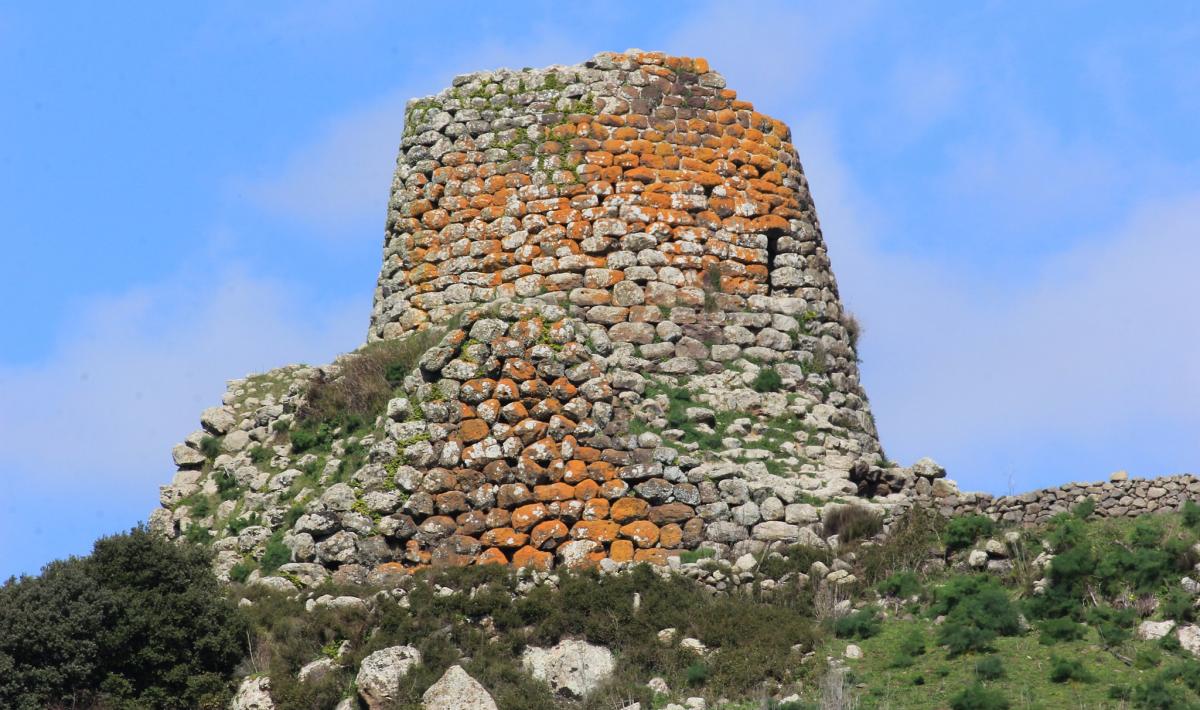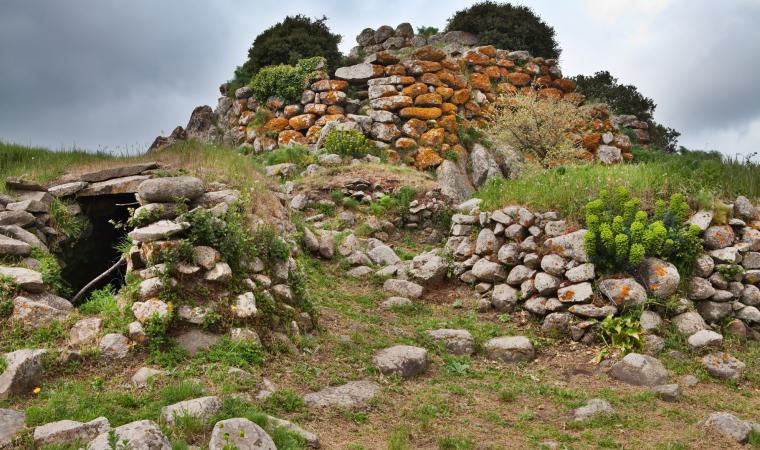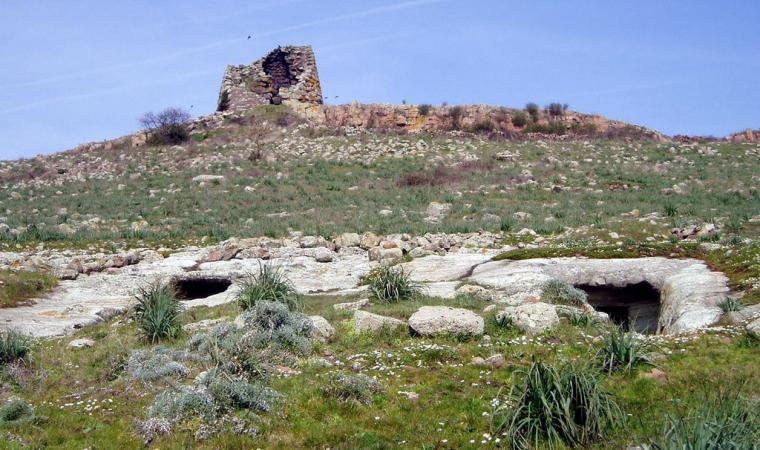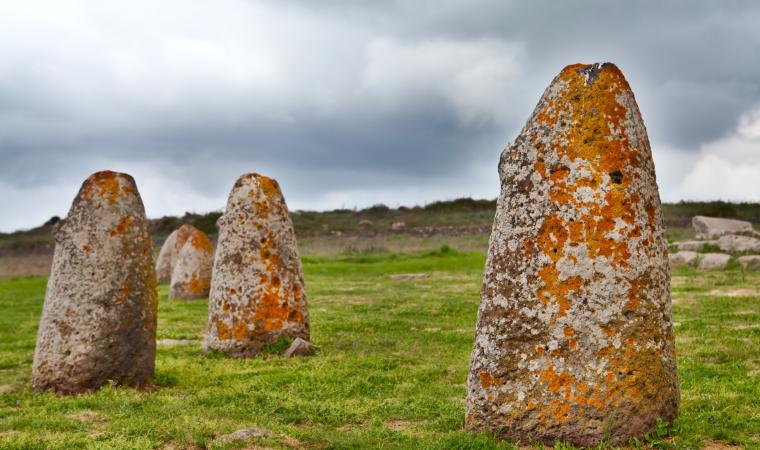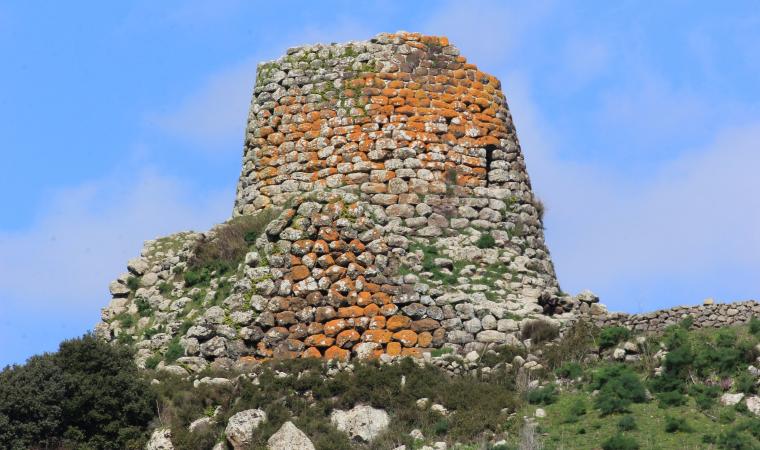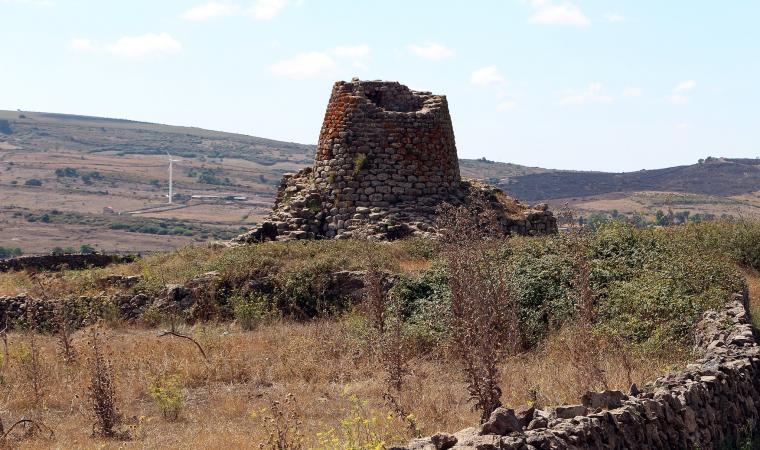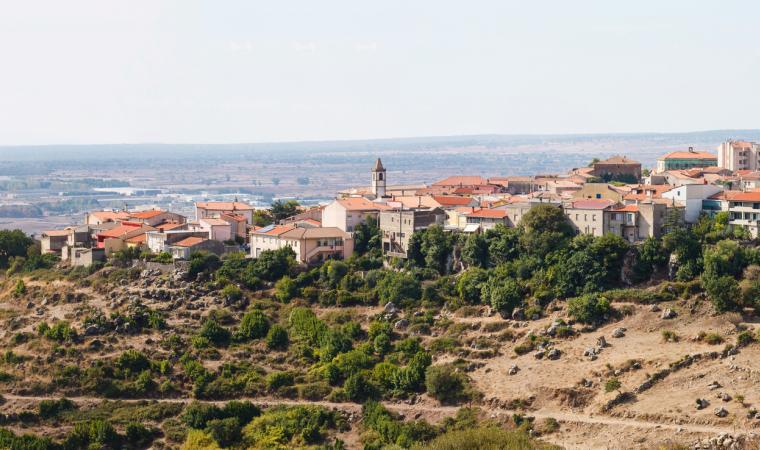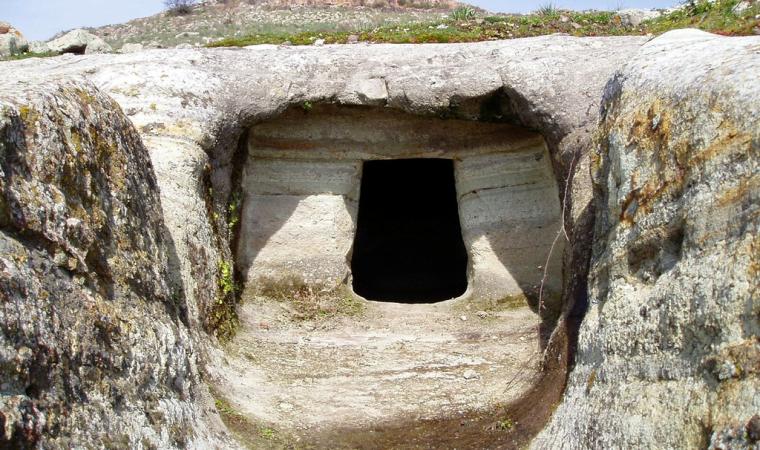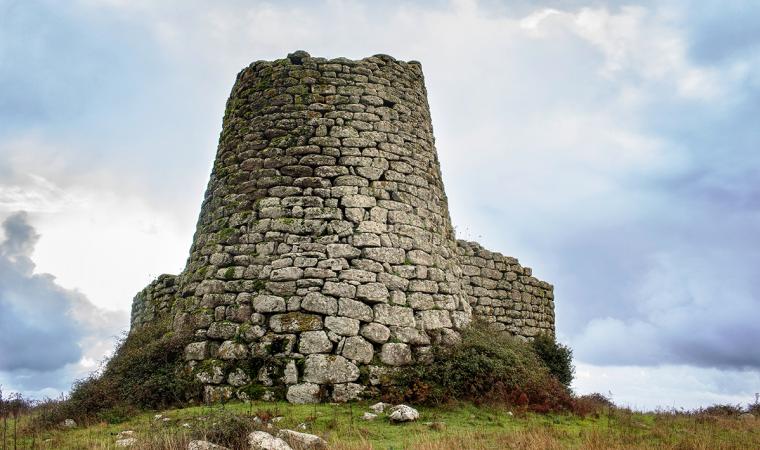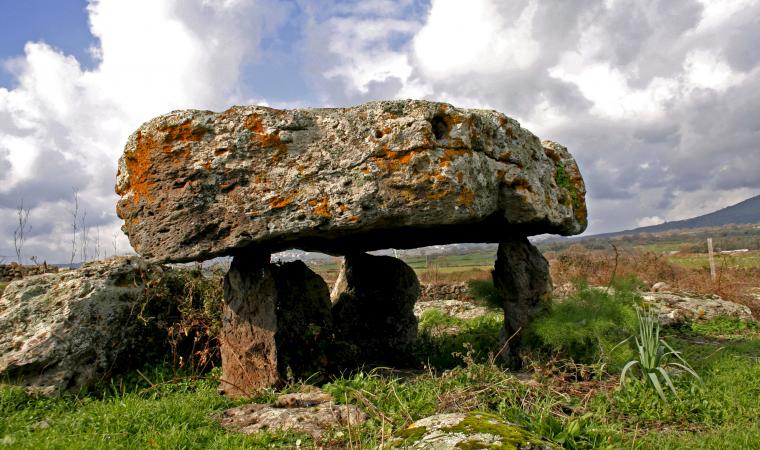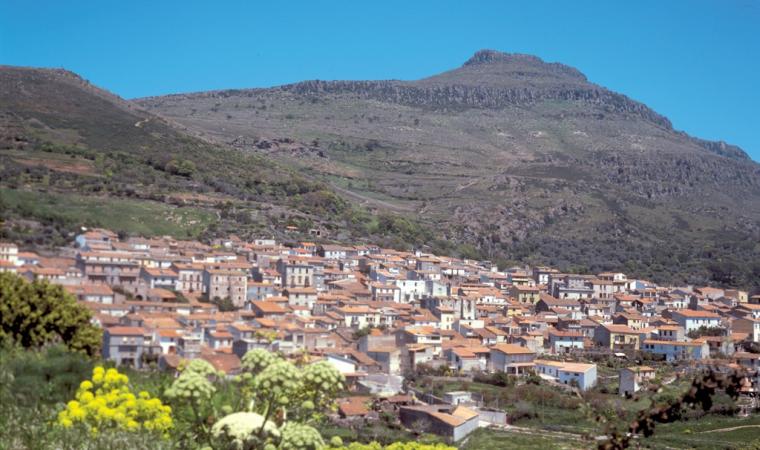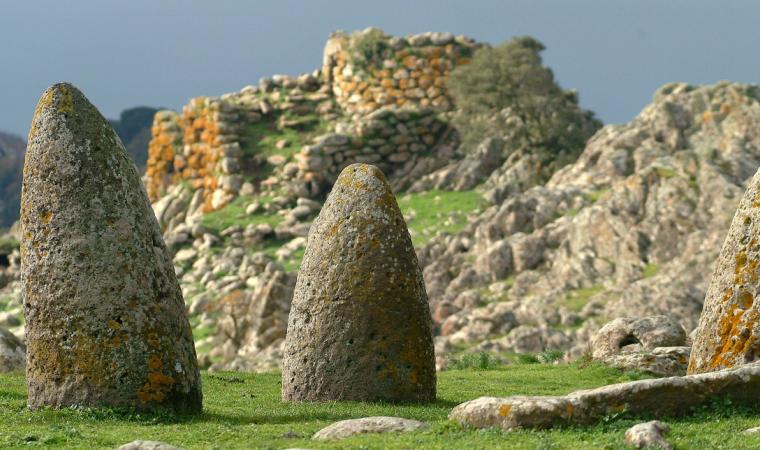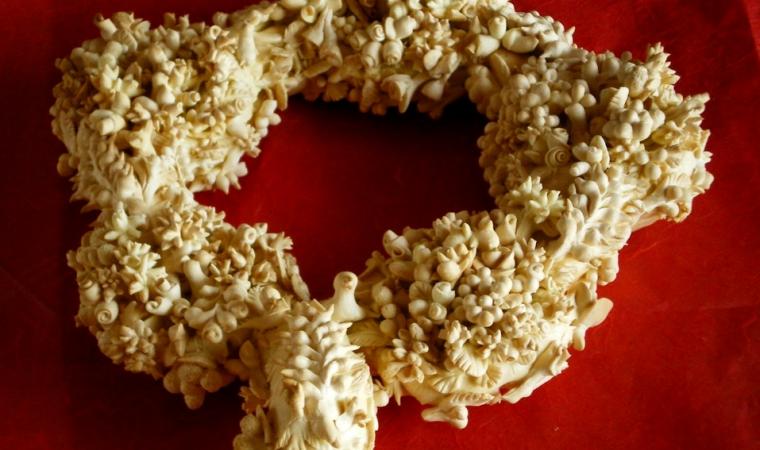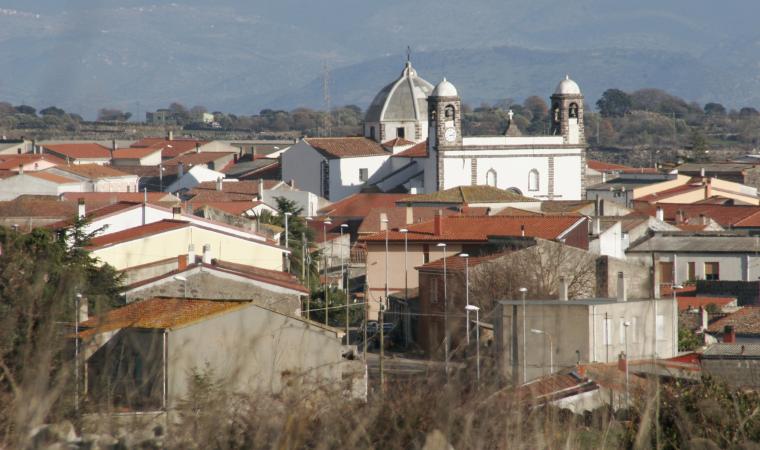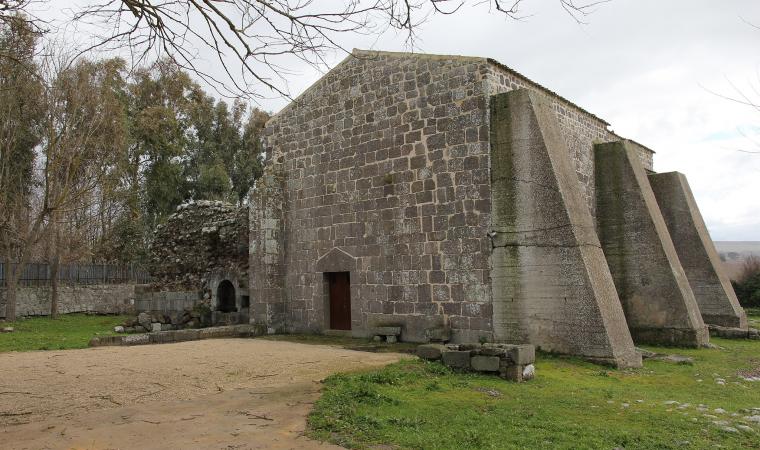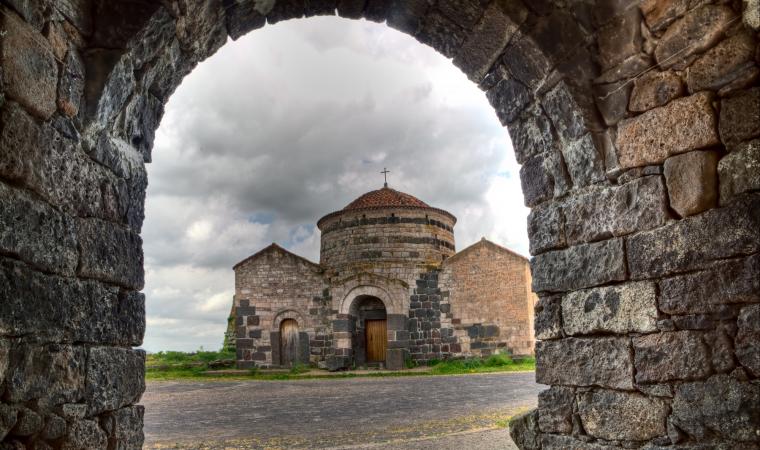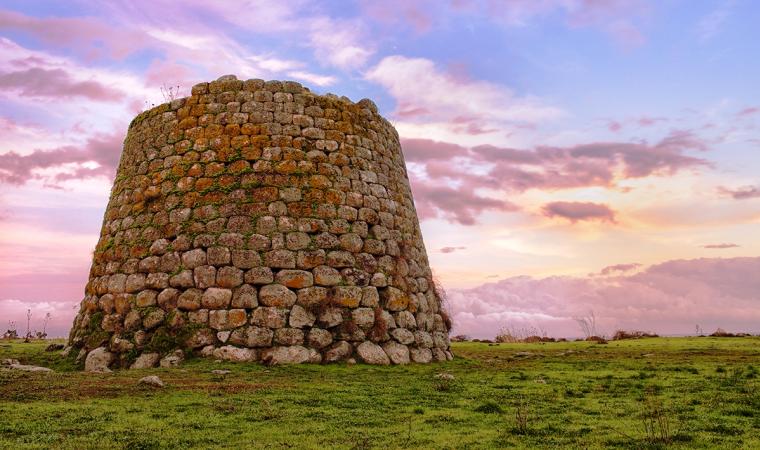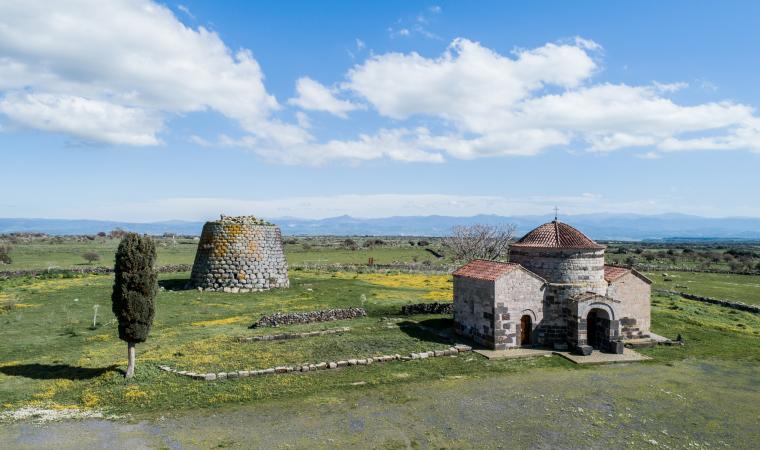At kilometre 145 of the State Road 131 (the Macomer-Birori junction in the direction of Sassari), it rises on a basaltic slope on the sides of Monte Manai in a dominant position on the Abbasanta plain. Leaving the main Sardinian thoroughfare, after a short distance travelled along a steep road, the Santa Barbara nuraghe can be admired in all its majesty. It takes its name from the ruins of the rural church dedicated to the saint. It has a complex architectural structure, consisting of a central tower and a quadrilobate bastion almost nine metres in height, which encloses an open-air courtyard. The four towers of the bastion, dated to the 15th century BC, are connected by curtain walls constructed in basalt blocks. Originally, it was defended by a barbican, with an attestation from the 19th century that is barely legible today.
Entry is gained from a quadrangular entrance leading to the courtyard. Here open up the accesses points to the towers. The central one is 15 metres in height and nine metres in diameter. Built with carefully-worked blocks and arranged in regular horizontal rows, the intact areas include a room on the ground floor, with three niches arranged in a cross profile, and a circular chamber on the first floor illuminated by a large window with architraves. The outline of a third room can be seen at the top. The side towers would have once connected to each other through corridors within the outer walls. Towers B and C are well preserved. The first, reachable via a short passageway, has a circular layout of over three metres in diameter. A trapezoidal entrance opens in a wall and leads to a small level with three large niches-embrasures. Tower C, also circular yet larger (at four metres in diameter and five in height), is accessible directly from the courtyard via an architraved entrance, and shows two niches-embrasures and three cabinets. Towers D and E are almost totally destroyed. Around the Nuraghe structures are the remains of a large settlement, which lasted for a long period from the middle of the 2nd millennium BC until the Roman era, and then the early Middle Ages.
In addition to that of Santa Barbara, other buildings from the Bronze Age dot the Macomer territory. Worthy of seeing are the burial complex of Perdas de Tamuli and the Ruju Nuraghe structure, mono-towers with a 13-meter diameter. Alongside stands a monument from the beginning of the 2nd millennium BC - the four Domus de Janas of the Filigosa necropolis. The earliest traces of humankind are in the Grotta Marras, with the discovery of a statue of the Mother Goddess (‘Venere di Macomer’) that dates back to the Upper Palaeolithic period. In the Punic era, Macomer was perhaps Macopsissa, a city cited by the geographer Ptolemy (II AD). In Roman times the centre was a strategic place of passage, as is evidenced by the remains of streets and six milestones, two preserved in the G.A. Sanna museum in Sassari.

